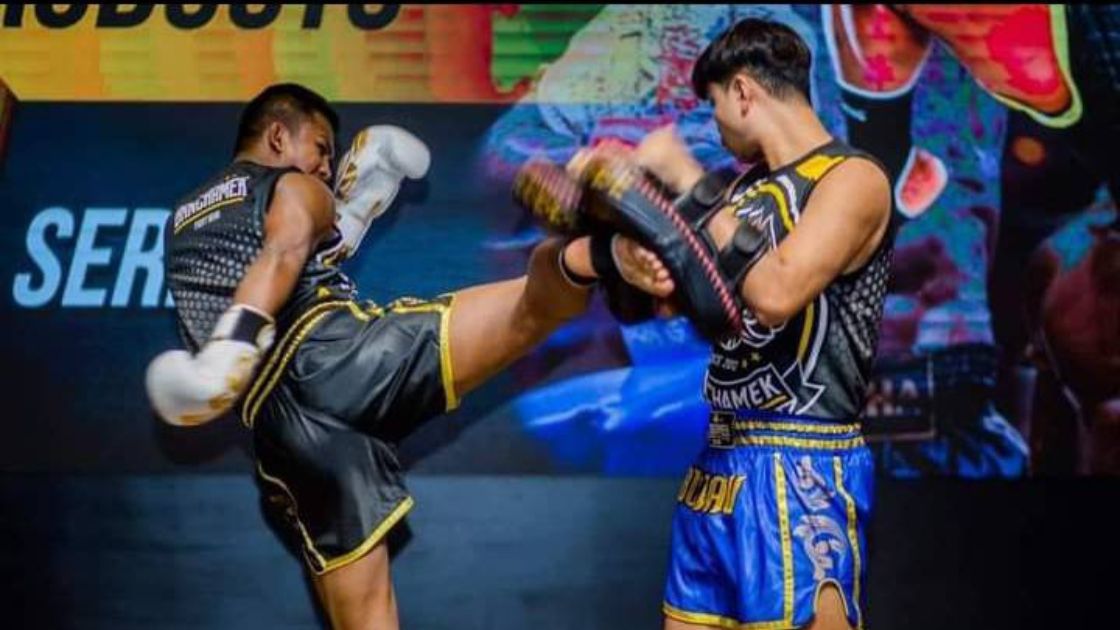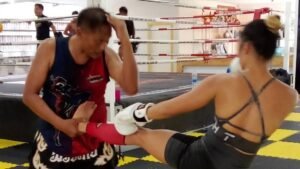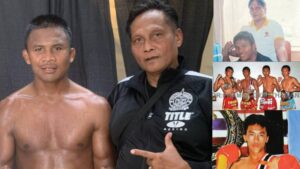Muay Thai, often referred to as the “Art of Eight Limbs,” is a dynamic and rigorous martial art that originated in Thailand. This discipline is unique in its comprehensive use of punches, kicks, elbows, and knee strikes, making it highly effective for both self-defense and competitive sport. The journey to mastering Muay Thai is multifaceted, demanding a balanced approach that encompasses strength training, endurance conditioning, and technical proficiency.
Understanding the importance of a well-rounded training regimen is fundamental for anyone aspiring to excel in Muay Thai. Strength training is indispensable as it enhances muscle power and resilience, enabling practitioners to deliver powerful strikes while maintaining control and stability. Endurance, on the other hand, is crucial for sustaining high levels of performance throughout extended bouts, ensuring that fighters remain effective and agile even as they tire.
Equally important is the focus on technique. Precision and skill in executing movements are what distinguish an adept Muay Thai fighter from a novice. Each strike and defensive maneuver must be practiced meticulously to ensure efficacy and minimize the risk of injury. Technical training not only involves perfecting individual moves but also understanding their application in various scenarios, thereby enhancing tactical awareness and adaptability in the ring.
This blog post is designed to guide readers through the essential components of a Muay Thai training regimen. By delving into detailed methodologies for strength training, endurance building, and technique refinement, we aim to provide a comprehensive resource for both beginners and seasoned practitioners. Whether you are looking to improve your fitness, prepare for competition, or simply deepen your understanding of this martial art, the insights shared here will equip you with the knowledge needed to elevate your Muay Thai practice.
Strength Training for Muay Thai Fighters
Strength training is a foundational component for any Muay Thai fighter looking to enhance their performance. The physical demands of Muay Thai require a regimen that not only builds raw strength but also translates that strength into power and explosiveness. Key compound movements like squats, deadlifts, and bench presses serve as the cornerstone of this regimen.
Squats are pivotal for developing lower body strength and stability, essential for delivering powerful kicks and maintaining balance during clinches. Deadlifts, on the other hand, focus on the posterior chain, reinforcing the muscles of the back, glutes, and hamstrings. This exercise is crucial for the hip drive involved in strong knee strikes and defensive maneuvers. Bench presses round out the trio by targeting the upper body, particularly the chest, shoulders, and triceps, which play a significant role in throwing effective punches and maintaining guard position.
In addition to these traditional compound lifts, Muay Thai-specific exercises should be integrated for optimal performance. Heavy bag work is indispensable, allowing fighters to apply their strength in a dynamic, sport-specific context. Striking the heavy bag with force not only builds muscle endurance but also hones technique and timing.
Resistance band drills are another effective method to build functional strength. These drills often mimic the movements specific to Muay Thai, such as punches, kicks, and knee strikes, but with added resistance. The constant tension provided by resistance bands helps in developing muscle coordination and explosive power, essential for quick and forceful strikes.
By combining these compound movements with Muay Thai-specific exercises, fighters can develop the necessary power and explosiveness required for effective striking and clinching. This balanced approach ensures that strength training aligns with the functional demands of Muay Thai, preparing athletes for both the physical and technical challenges of the sport.
Endurance Training: Building Stamina for the Ring
Endurance is a crucial component for any Muay Thai fighter aiming to last through multiple intense rounds in the ring. To build the necessary stamina, fighters incorporate a blend of cardiovascular and conditioning exercises into their training regimens. These exercises are designed to enhance both aerobic and anaerobic conditioning, ensuring a balanced approach to endurance.
Running is a fundamental element in Muay Thai endurance training. Fighters often engage in long-distance runs, which help to build aerobic capacity and improve cardiovascular health. These runs typically range from 5 to 10 kilometers and are performed several times a week. In addition to long-distance runs, sprints and hill runs are integrated to boost anaerobic conditioning, enhancing explosive power and recovery times.
Skipping rope is another staple activity for Muay Thai practitioners. This exercise not only improves cardiovascular endurance but also enhances coordination, footwork, and rhythm—key skills needed in the ring. Fighters usually skip rope for 10 to 20 minutes as part of their warm-up routines or as a dedicated cardio session.
High-Intensity Interval Training (HIIT) is highly effective for developing both aerobic and anaerobic endurance. HIIT workouts involve short bursts of intense activity followed by brief periods of rest or low-intensity exercise. For example, a common HIIT routine may include 30 seconds of maximum-effort punching or kicking, followed by 30 seconds of rest, repeated for several rounds. This method significantly improves cardiovascular efficiency and muscular endurance.
Circuit training routines are also prevalent in Muay Thai endurance training. These routines consist of a series of exercises performed in succession with minimal rest in between. Typical circuit exercises include push-ups, sit-ups, burpees, kettlebell swings, and medicine ball slams. By combining strength and cardiovascular challenges, circuit training helps fighters build comprehensive stamina and resilience.
The balance between aerobic and anaerobic conditioning is essential. While aerobic exercises improve overall cardiovascular health and long-term stamina, anaerobic workouts are critical for enhancing short bursts of power and speed required during fights. Muay Thai training programs strategically blend these elements to ensure fighters are well-prepared for the demands of the ring.
Technical Drills for Perfecting Muay Thai Techniques
Muay Thai, also known as the “Art of Eight Limbs,” is a martial art that utilizes the fists, elbows, knees, and shins. To master these tools, engaging in specific technical drills is paramount. These drills not only improve precision and power but also enhance overall technique. One of the foundational drills in Muay Thai is shadow boxing, an exercise that allows practitioners to refine their movements without the need for equipment or a partner. By visualizing an opponent, practitioners can focus on executing clean strikes, maintaining proper balance, and improving footwork.
Pad work is another essential drill for developing proficiency in Muay Thai techniques. This involves a trainer holding pads while the practitioner delivers various strikes. This drill is crucial for honing the timing, speed, and accuracy of kicks, punches, knees, and elbows. The resistance provided by the pads also helps in building striking power and conditioning the body to withstand impacts.
Partner drills play a significant role in mastering the clinch, a key aspect of Muay Thai. These drills involve practicing techniques such as the knee strike, elbow strike, and various clinch maneuvers with a partner, allowing for a realistic simulation of combat scenarios. Through consistent practice, fighters learn to control their opponents, deliver effective strikes from the clinch, and defend against counterattacks.
Repetition and proper form are critical components of technical drills. Focusing on correct technique during each repetition ensures that movements become second nature, reducing the risk of injury and increasing efficiency in actual combat situations. Consistent practice with an emphasis on proper form enables fighters to execute strikes with precision and power, enhancing their overall performance.
In summary, technical drills such as shadow boxing, pad work, and partner drills are indispensable for perfecting Muay Thai techniques. These drills help practitioners develop precision, power, and efficiency, laying a strong foundation for success in this demanding martial art.
Flexibility and Mobility: Essential Components of Training
Flexibility and mobility are integral aspects of any comprehensive Muay Thai training regimen. Often overshadowed by strength and endurance training, these components play a pivotal role in preventing injuries and optimizing performance. Effective stretching routines, dynamic warm-ups, and mobility exercises are essential for ensuring that fighters can execute techniques with precision and fluidity.
Dynamic warm-ups are the first step in preparing the body for intense physical activity. These warm-ups typically include exercises like leg swings, arm circles, and torso twists, which gradually increase the heart rate and enhance muscle flexibility. Engaging in dynamic warm-ups not only primes the muscles but also boosts joint mobility, making it easier to perform complex Muay Thai moves.
In addition to dynamic warm-ups, a well-rounded stretching routine is crucial. Static stretching, where muscles are gently extended and held for 15-30 seconds, helps in elongating muscle fibers and increasing overall flexibility. Key stretches for Muay Thai practitioners include hamstring stretches, hip flexor stretches, and calf stretches. These target areas that are heavily utilized in kicking and kneeing techniques, ensuring that fighters can extend their range of motion effectively.
Mobility exercises further complement flexibility by focusing on the functional movement of joints. Exercises such as hip rotations, ankle mobility drills, and shoulder dislocations enhance the range of motion and strengthen the surrounding muscles. This holistic approach to mobility ensures that the joints are not only flexible but also stable and strong, reducing the risk of injuries during training and competition.
The benefits of improved flexibility and mobility extend beyond injury prevention. Enhanced flexibility allows fighters to perform high kicks, evasive maneuvers, and rapid strikes with greater ease and efficiency. It also contributes to better body control and balance, which are critical in maintaining an advantageous position during a bout.
Incorporating flexibility and mobility exercises into a Muay Thai training regimen is therefore indispensable. These exercises not only safeguard against injuries but also significantly enhance the overall effectiveness and efficiency of technique execution, paving the way for superior performance in the ring.
Nutrition and Recovery: Supporting Your Training Regimen
For a Muay Thai fighter, maintaining optimal performance and longevity in the sport necessitates a balanced and strategic approach to nutrition and recovery. Proper nutrition supports the energy demands of rigorous training while facilitating muscle repair and growth. The dietary requirements of a Muay Thai practitioner should include a well-balanced intake of macronutrients: carbohydrates, proteins, and fats.
Carbohydrates are the primary source of energy, especially important for high-intensity training sessions. Complex carbohydrates such as whole grains, legumes, and vegetables should constitute a significant portion of the diet. Proteins are crucial for muscle repair and growth; lean sources like chicken, fish, tofu, and legumes are recommended. Healthy fats, found in avocados, nuts, seeds, and olive oil, aid in hormone production and overall cellular health.
Pre-training meals should ideally be consumed 1-3 hours before exercise and should focus on providing sustained energy. A meal comprising complex carbohydrates, moderate protein, and minimal fat is ideal. Post-training nutrition is equally critical; it should aim to replenish glycogen stores and support muscle recovery. A combination of fast-digesting carbohydrates and high-quality proteins within 30 minutes of training can significantly enhance recovery processes.
Hydration cannot be overlooked; adequate water intake before, during, and after training is essential to maintain performance and prevent dehydration. Electrolyte-rich beverages can also be beneficial, particularly in prolonged or intense training sessions.
Recovery practices are integral to sustaining a demanding training regimen. Scheduled rest days allow muscles to repair and grow, reducing the risk of overtraining and injury. Incorporating foam rolling and regular massage into your recovery routine can alleviate muscle tightness, improve flexibility, and enhance blood circulation. Quality sleep is paramount, as it is during deep sleep that the body undergoes most of its repair and growth processes. Ensuring 7-9 hours of restful sleep each night can significantly impact performance and recovery.
By prioritizing a well-rounded approach to nutrition and recovery, Muay Thai fighters can sustain high levels of performance, reduce injury risk, and achieve their training goals more effectively.
“`html
Mental Conditioning: The Psychological Aspect of Training
Mental toughness is a critical component in mastering Muay Thai, complementing physical conditioning to achieve peak performance. Developing mental resilience, focus, and discipline can significantly impact a fighter’s ability to endure the rigorous demands of training and competition.
Visualization is a potent technique utilized by many elite fighters. By mentally rehearsing movements and successful outcomes, athletes can enhance their confidence and reduce anxiety. This mental practice enables them to visualize themselves executing techniques flawlessly, preparing them for actual combat scenarios.
Goal setting is another essential strategy for building mental resilience. Establishing clear, attainable objectives helps fighters maintain motivation and track their progress. These goals can range from mastering a specific technique to achieving a certain level of fitness. By setting incremental milestones, athletes can celebrate small victories, which in turn fuels their drive to keep pushing forward.
Meditation and mindfulness practices are invaluable for cultivating focus and discipline. Regular meditation sessions can help fighters manage stress and improve their concentration during training and competition. Mindfulness, the practice of being fully present in the moment, allows fighters to maintain composure and make swift, strategic decisions in the heat of a match.
Staying motivated throughout the rigorous demands of Muay Thai training can be challenging. Fighters often face intense physical and psychological pressures. Establishing a strong support network, including coaches, training partners, and mental health professionals, can provide essential encouragement and guidance. Additionally, maintaining a balanced lifestyle with adequate rest, nutrition, and recovery periods is crucial for sustaining long-term motivation and mental well-being.
In conclusion, mastering the psychological aspect of Muay Thai is as vital as developing physical prowess. By incorporating techniques such as visualization, goal setting, meditation, and mindfulness, fighters can enhance their mental conditioning, enabling them to handle the pressures of training and competition effectively.
Creating a Balanced Training Schedule
Crafting a well-rounded training schedule is essential for mastering Muay Thai. Such a regimen should seamlessly integrate strength training, endurance workouts, technical drills, flexibility exercises, and recovery days. Achieving this balance not only optimizes physical and technical development but also mitigates the risk of injury and burnout.
A sample weekly training plan could look like this:
Monday
Morning: Strength training (focus on compound movements such as squats, deadlifts, and bench presses)
Afternoon: Technical drills (shadowboxing, pad work, and bag work)
Tuesday
Morning: Endurance workout (running or cycling for 45-60 minutes)
Afternoon: Sparring sessions to apply technical skills in a controlled environment
Wednesday
Morning: Flexibility exercises (yoga or dedicated stretching routines)
Afternoon: Light technical drills (focus on technique refinement and precision)
Thursday
Morning: Strength training (emphasis on core stability and functional movements)
Afternoon: Technical drills (clinching and elbow/knee strikes)
Friday
Morning: Endurance workout (interval training or sprints for cardiovascular efficiency)
Afternoon: Sparring sessions to enhance combat strategy
Saturday
Morning: Full-body flexibility exercises
Afternoon: Active recovery (light technical drills or a low-intensity activity like swimming)
Sunday
Recovery day (focus on rest, hydration, and proper nutrition)
While this plan provides a structured approach, it is crucial to tailor it to your individual goals and progress. For instance, beginners might need more focus on technical drills and flexibility, while advanced practitioners may prioritize sparring and strength training. Regularly assess your performance and adjust the intensity and frequency of workouts accordingly. Listening to your body and incorporating adequate rest is paramount to sustained success in Muay Thai training.




